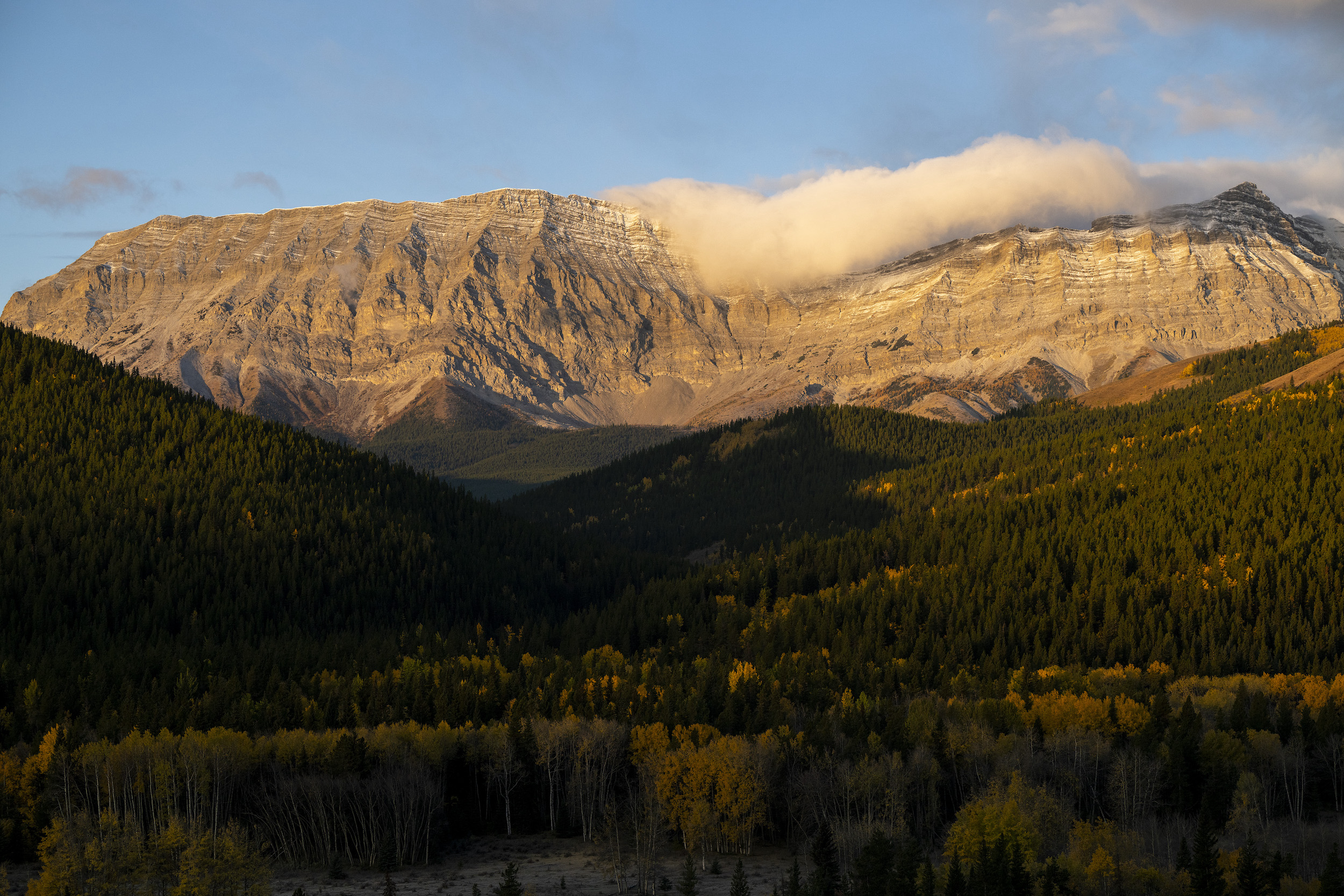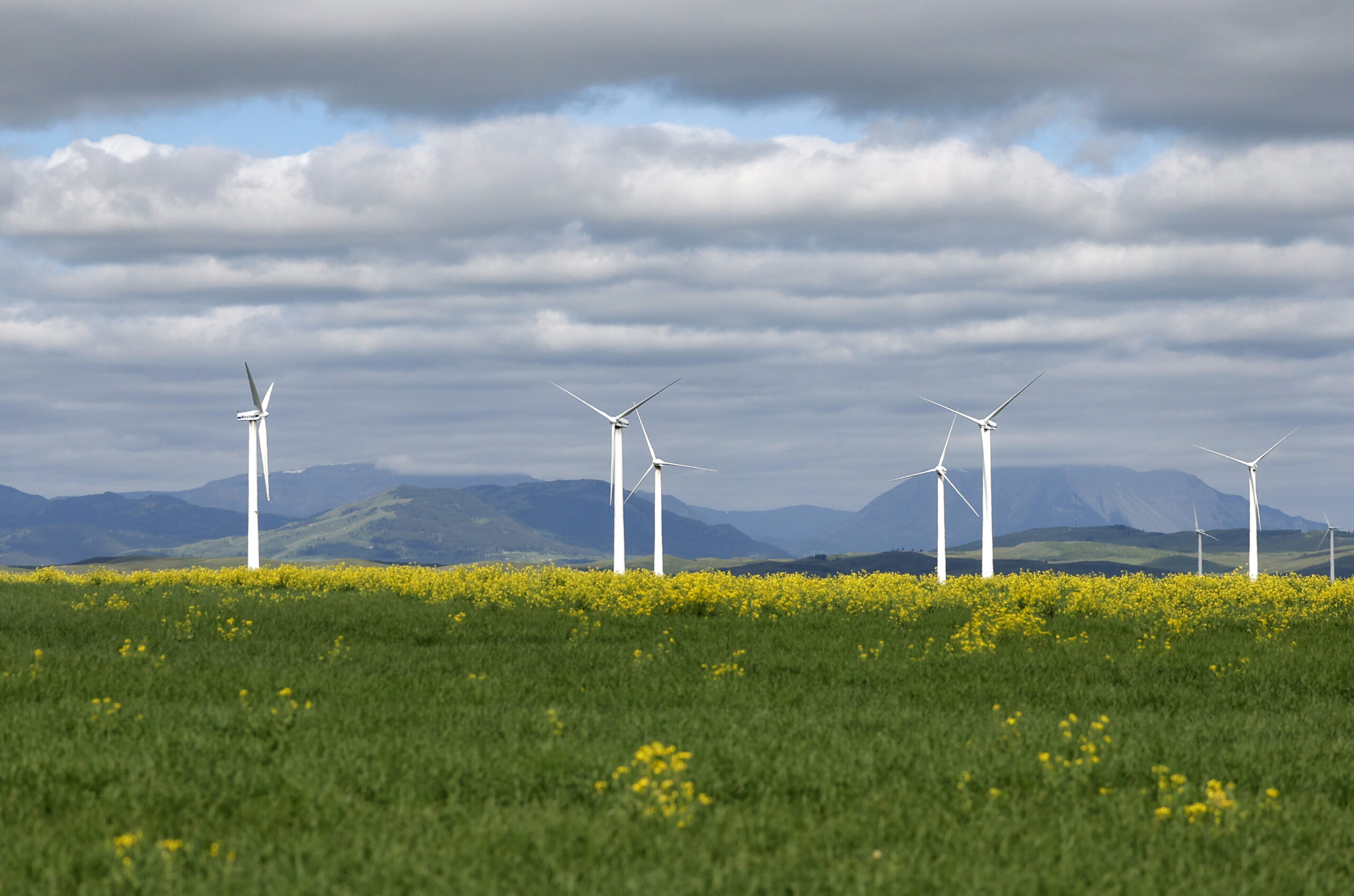
Rocky Mountain coal mine in Alberta takes next step to expansion
In Alberta, a massive open-pit coal mine near Jasper National Park is hoping to expand...
Get the inside scoop on The Narwhal’s environment and climate reporting by signing up for our free newsletter.
In the latest Alberta news, significant changes to the way the province is governed continue to be announced by the United Conservative Party government under Premier Danielle Smith.
To keep track, we’re rounding up the significant news of the past week.
While it would be difficult to live up to last week’s threats to break federal laws, control who can visit an oil and gas facility and establish a provincial border patrol, there are still some doozies this week.
Cougar hunting! A cozy post-hunt hotel room in a previously protected area in the mountains? Artificial intelligence (AI) isn’t just coming for your job, it’s coming for your electricity too. Aaand, speaking of electricity, it’s officially really hard to build renewables in Alberta. Take that, AI.
The legislature ended its fall sitting last week, with the government touting its work to fight “for the protection and advancement of Albertans’ rights and freedoms in an ever-evolving world” (on which we have some notes).
So things ought to calm down a little bit over the holidays. Right? Right?!
Last week, the government passed its All-Seasons Resort Act, a nice-sounding bit of legislation that will, let’s see, give the minister of sport and tourism the power to remove protected-area designation and establish all-season resort zones.

Tourism developments in those zones will be exempt from the “normal environmental land-use planning, review and approval processes applied to all other public land use activities,” according to the Canadian Parks and Wilderness Society.
Or, as the government puts it, the act “will create the investment certainty necessary to attract private capital into the province’s tourism sector.”
The goal is to have year-round resorts on Crown public land across Alberta.
The act passed through the legislature on Dec. 4.
The Alberta government officially implemented new rules for renewable energy development.
Specifically, there are now new restrictions on where projects can be built. Anyone pitching a project on what’s known as prime agricultural land (Class 1 and Class 2 if you’re hip to that jive) will have to prove the project can co-exist with both crops and livestock.
But, just to make sure it’s difficult in all areas of the province, the new rules say that “in municipalities without Class 1 or 2 lands, Class 3 lands will be treated as Class 1 and 2.”

Proponents of a project must also conduct an “irrigability assessment.” It’s Friday afternoon as this is being written and we don’t know precisely what that means, but we’re pretty sure it’s going to provoke some “irritability assessments.” Get it?
Projects will require security deposits for reclamation, new wind projects will be barred from viewscape buffer-zone areas and all other electricity projects in that zone or within a “visual impact zone” will have to submit a “visual impact assessment.”
Watch for an avalanche of wind farm proposals in Walmart parking lots across the province.
While the government works to restrict what was once a booming renewables sector, it is also pushing to attract energy-intensive AI data-processing centres.
Last week, the government announced an “attraction strategy” for the centres that has three pillars: “power capacity, sustainable cooling and economic diversification.”
According to the International Energy Agency, data centres accounted for between one and two per cent of global energy use in 2022 — back when ChatGPT was just a baby.
That amount of energy is roughly equivalent to 71 per cent of Canada’s electricity generation that same year, according to the federal government.
That’s only expected to grow as the sector explodes. “Alberta is uniquely positioned to capture the AI data centre opportunity, leveraging our vast natural gas resources and pro-business environment to create thousands of high-quality jobs and attract billions in investment,” Nate Glubish, the minister of technology and innovation, said in a press release.
The minister said he wants to see $100-billion worth of data centres under construction in the next five years and is heading to the United Arab Emirates this month to pitch the province at the Global AI Show.
One thing to keep an eye on is the interest in building electricity infrastructure, even beyond renewables. The Alberta Electric System Operator is currently restructuring Alberta’s market, leading to significant uncertainty and a drying up of investment.
We don’t normally ask AI to do our reporting for us, but here we thought it might be able to help. When asked what Alberta could do to increase its generating capacity, ChatGPT’s top suggestion was to expand renewable energy generation. But it also thought we still had a bunch of coal plants. We don’t — so it looks like AI could use another data centre or two.
On Dec. 1, the province quietly opened a new cougar hunt in Cypress Hills Provincial Park.
In November, the government also carved out an exception for off-leash dogs if they’re hunting cougars, so hounds can be used to trap the big cats in trees for hunters to shoot.

It’s one of several hunting changes introduced by the province under Parks and Forestry Minister Todd Loewen, which include removing limits on trapping animals like wolverines in order to, uh, find out how many wolverines there are.
Loewen is an avid hunter and his family owns an outfitting business.
We recommend not going on Reddit to read all the suggestions to go cougar hunting at a bar instead in response to The Narwhal’s article.
On Thursday, we got our second look at data on how Alberta’s oil and gas cleanup is going. And, well, a bit of good news, a bit of bad news?
The good: industry is spending more on cleaning up its own pollution, and the number of inactive wells decreased.
The bad: Overall spending, when you factor in the Orphan Well Association and a previous government clean-up program, is down. And while the number of inactive wells decreased, it was significantly less than the previous year’s decrease. Also, there are still almost 80,000 to go.
If you’re into data, though, you can now play around with some new dashboards on the regulator web site, including details of companies not paying their dues and regional breakdowns. Ooh!
Get the inside scoop on The Narwhal’s environment and climate reporting by signing up for our free newsletter. A $335 million funding commitment to fund...
Continue reading
In Alberta, a massive open-pit coal mine near Jasper National Park is hoping to expand...

A trade war could help remake B.C.’s food system, but will family farmers be left...

First Nations are leading efforts to make sure lake sturgeon can find a home in...
